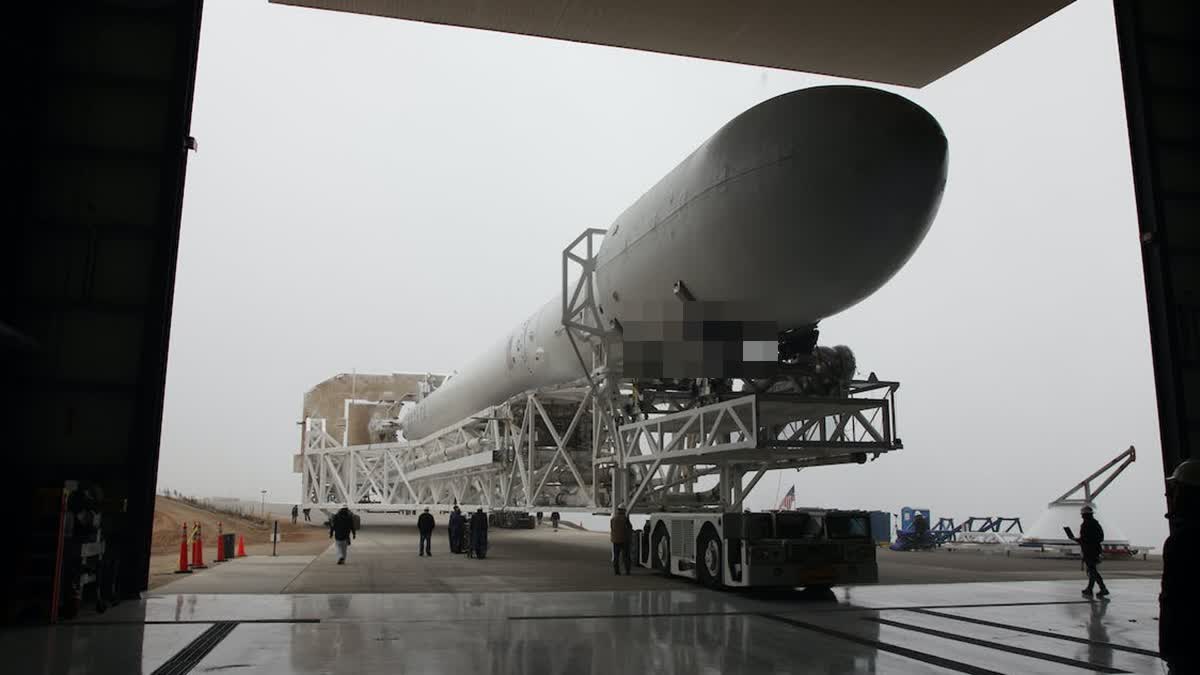New Delhi: Though Iran has unveiled a new long-range missile that is capable of hitting targets in Israel, it is unlikely that Tehran will use it in the ongoing war between the Jewish nation and the Palestinian militant group Hamas. Last Sunday, Iran unveiled an upgraded version of its Fattah missile called Fattah II.
The missile was unveiled at an exhibition held at the Ashura Aerospace Science and Technology University to showcase the latest advancements in Iran’s aerospace technology. Iran claims that the Fattah II is a state-of-the-art missile with glide capability, placing it in the HGV (hypersonic glide vehicle) and HCM (hypersonic cruise missile) classes of hypersonic weapons.
“This technological achievement underscores Iran’s position as one of only four countries worldwide capable of manufacturing this type of hypersonic weapon,” Iranian state media IRNA reported. The Iranian Revolution Guard Corps (IRGC) Aerospace Force had unveiled the Fatth missile system earlier this year claiming that it was “home-made”. The IRGC claimed that hypersonic missile has a range of 1,400 km, hits speeds of Mach 13-15 and can intercept and destroy all anti-missile shields.
This is what has sparked speculations as to from where Iran acquired this technology. Iran is not a member of the Missile Technology Control Regime (MTCR), an informal political understanding among 35 member states, including India, that seek to limit the proliferation of missiles and missile technology. The MTCR is aimed at preventing the proliferation of missile and unmanned aerial vehicle technology capable of carrying greater than 500 kg payload for more than 300 km.
The members are thus prohibited from supplying such missiles and unmanned aerial vehicle (UAV) systems that are controlled by the MTCR to non-members. The decisions are taken by consensus of all the members. Iran never had missiles that had a range of over 300 km. Speculations are that Iran might have acquired the technology from a friendly country.
Only three other countries have this technology – Russia, China and the US. Russia has the Avangard HGV, an intercontinental ballistic missile with a nuclear warhead and the Tsirkon (Zircon), a ship-launched cruise missile. China has the DF-17, a medium-range ballistic missile designed to launch hypersonic glide vehicles and the DF-41, intercontinental ballistic missile that can be modified to carry a conventional or nuclear glide vehicle.
Also read: Iran accuses Israel of supplying potentially exploding parts for ballistic missile program
China has conducted two hypersonic weapons tests. The US, though, is believed to be several years behind China in hypersonic technology development despite significant investment. The Iranians claims, if true, mean that the Fattah II missile can hit targets not only in Israel but also in the Indian Ocean where the US Fifth Fleet is deployed.
What has further sparked speculations is the timing of unveiling of the upgraded version of the missile. It was done in the middle of the war between Israel and Hamas since October 7 that has claimed over 16,000 lives on both sides so far. What signal is Iran trying to send? Is it threatening to use the missile against Israel?
“Capability is one thing and intention is another thing,” R Dayakar, former Indian Ambassador to Iraq and Jordan who also served in the West Asia desk of the Ministry of External Affairs, told ETV Bharat. “Iran won’t get into the war directly. Iran will use this missile more as a deterrence measure.”
Dayakar pointed out that Iran is surrounded by pro-Israel powers – Azerbaijan to the north, Iraqi Kurdistan, the United Arab Emirates (UAE) and Bahrain to the west and the US naval fleet in the Indian Ocean. Both the UAE and Bahrain have signed the Abraham Accords to establish diplomatic relations with Israel.
At the same time, Iran too has cleverly positioned its own proxies to surround Israel – the Hezbollah in Lebanon to the north, the Houthis in Yemen to the south, the Shiite militias in Syria and Iraq to the east and Hamas and the Palestine Islamic Jihad in Gaza. These forces, which are believed to have been equipped with 300-km-range missiles by Iran, are already carrying out a proxy war against Israel on behalf of Tehran.
The question then again arises: how did Iran acquire the technology to develop the hypersonic missile? According to one source, Tehran might have stolen it from somewhere or might have acquired it secretly from Russia. At the same time, the possibility of Iran developing it indigenously cannot be ruled out. After all, Iran did supply its indigenously developed drones to Russia in its war against Ukraine. Iran had also acquired the S-300 missile system with a range of 300 km from Russia in 2016.


